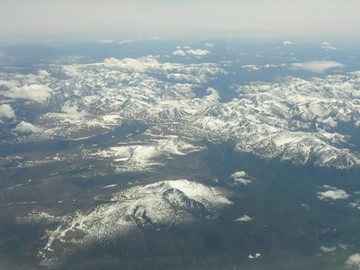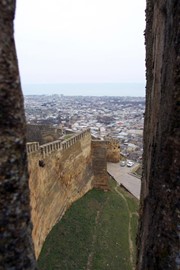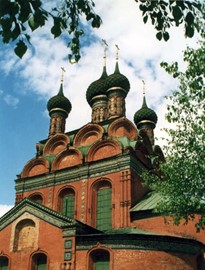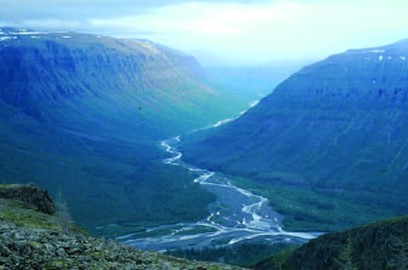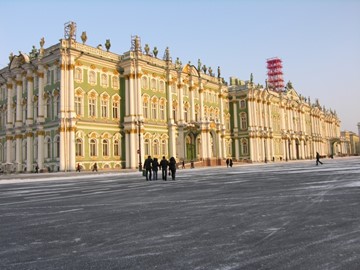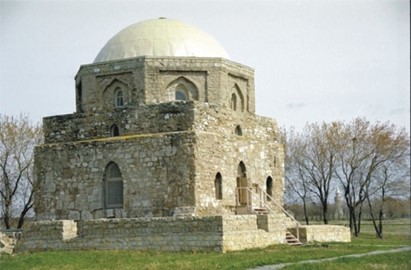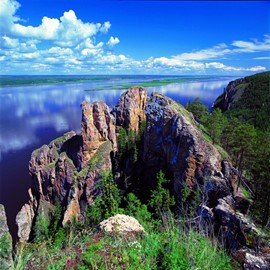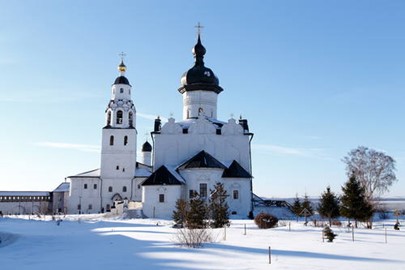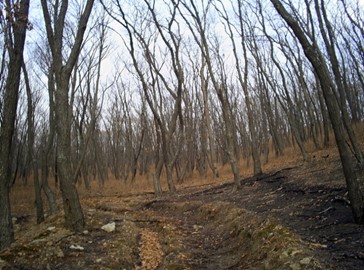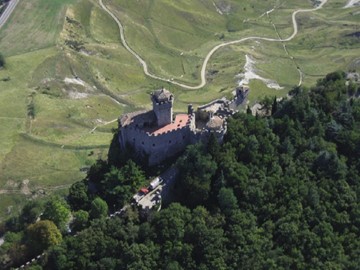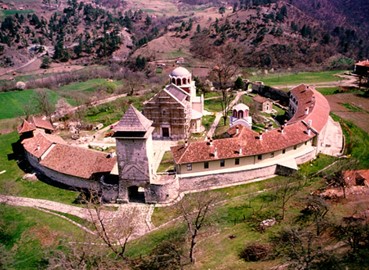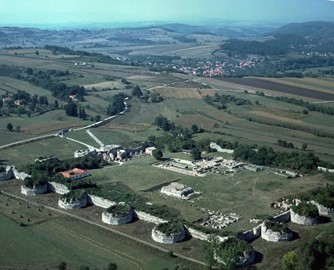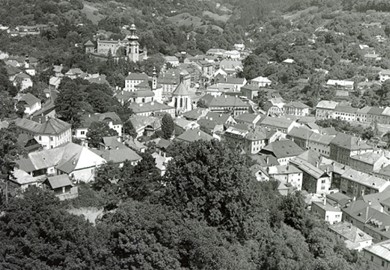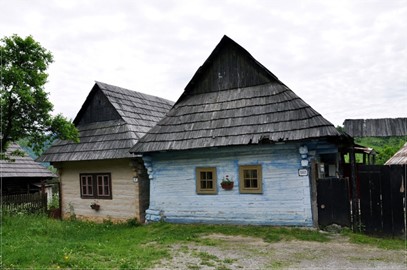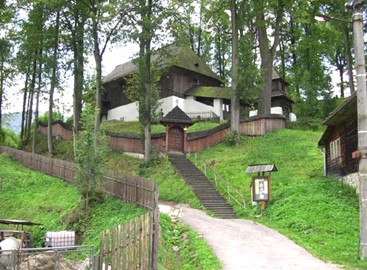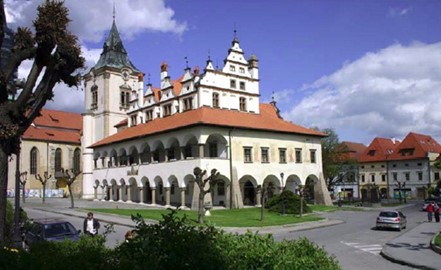region :: europe and north america
Volcanoes of Kamchatka
The Volcanoes of Kamchatka, a UNESCO World Heritage site in Russia, is a remarkable geological region featuring one of the most active volcanic zones on Earth. This site showcases a diverse range of volcanic landscapes, including towering stratovolcanoes, lava fields, and thermal springs, formed by the subduction of the Pacific Plate beneath the Eurasian Plate. It is also home to unique ecosystems, supporting rare species like the Kamchatka brown bear and Steller’s sea eagle. The site’s pristine natural bea... Read More
Golden Mountains of Altai
The Golden Mountains of Altai, a UNESCO World Heritage site in Russia, encompass a stunning landscape of rugged peaks, deep valleys, and pristine rivers. This biodiverse region is home to rare species like the snow leopard and Altai argali, thriving amidst vast forests and alpine meadows. Its geological significance and rich cultural history, tied to ancient nomadic traditions, make it a globally treasured natural and historical gem.
Western Caucasus
The Western Caucasus, a UNESCO World Heritage site in Russia, is renowned for its stunning natural beauty and ecological significance. This region showcases a diverse range of landscapes, from snow-capped mountains to lush forests, and serves as a critical habitat for numerous rare and endangered species. Its unique geological formations and rich biodiversity highlight its importance as a pristine example of temperate ecosystems, drawing attention for both conservation efforts and scientific study.
Kazan Kremlin
The Kazan Kremlin, a UNESCO World Heritage site in Russia, is a historic citadel showcasing a unique blend of Tatar and Russian architectural styles. Constructed primarily in the 16th century under Ivan the Terrible’s reign, it features notable structures like the Annunciation Cathedral and the leaning Söyembikä Tower, reflecting its rich cultural and political history. Originally a Tatar fortress, it was transformed into a Russian stronghold, symbolizing the region’s complex past. Today, it serves as a key... Read More
Ferapontov Monastery
Ferapontov Monastery, a UNESCO World Heritage site in Russia, is a well-preserved example of medieval Orthodox architecture and art. Founded in the late 14th century by Saint Ferapont, the monastery is renowned for its stunning frescoes, painted in 1502 by the master artist Dionisy, which adorn the interior of the Cathedral of the Nativity of the Virgin. These vibrant, detailed murals, along with the monastery’s serene white-stone structures, reflect Russia’s rich spiritual and cultural heritage, making it ... Read More
Wrangel Island
Wrangel Island, a UNESCO World Heritage site in Russia, is a remote Arctic sanctuary renowned for its exceptional biodiversity and paleontological significance. Located in the Chukchi Sea, it serves as a critical habitat for polar bears, walruses, and migratory birds, while also hosting one of the world’s largest populations of Pacific walrus. The island’s pristine ecosystem, untouched by glacial activity during the last Ice Age, preserves ancient flora and fauna, offering a unique glimpse into the Pleistoc... Read More
Derbent
Derbent, a UNESCO World Heritage site in Russia, is an ancient city renowned for its historical and cultural significance. Founded in the 8th century, it boasts a well-preserved citadel, massive defensive walls, and a strategic location along the Caspian Sea, reflecting its role as a key stronghold in the region. The site showcases a blend of Persian, Islamic, and Russian influences, evident in its architecture and artifacts. Derbent stands as a testament to centuries of civilization and trade along the Sil... Read More
Novodevichy Convent
The Novodevichy Convent, a UNESCO World Heritage site in Russia, is a historic fortified monastery founded in 1524 by Grand Prince Vasili III to commemorate the conquest of Smolensk. Renowned for its striking architecture, the convent features a blend of Moscow Baroque style with its golden-domed churches, whitewashed walls, and ornate frescoes, reflecting centuries of Russian Orthodox heritage. It served as a religious and cultural center, housing noblewomen and playing a significant role in the country's ... Read More
Yaroslavl
The Historic Centre of Yaroslavl, a UNESCO World Heritage site in Russia, is a remarkably well-preserved example of a Russian town that developed from the 11th century into a thriving commercial and cultural hub. Its urban layout reflects a blend of radial planning and traditional Russian architecture, featuring notable landmarks like the Assumption Cathedral and the Church of Elijah the Prophet, adorned with stunning frescoes. Recognized for its historical significance and architectural harmony, it stands ... Read More
Putorana Plateau
The Putorana Plateau, a UNESCO World Heritage site in Russia, is a vast basalt plateau formed by ancient volcanic activity, featuring dramatic landscapes of deep canyons, waterfalls, and over 25,000 lakes. Often called the 'Land of a Thousand Waterfalls,' it hosts unique ecosystems with rare species like the Putorana snow sheep, thriving in isolation due to its remote Arctic location. Its geological significance and biodiversity make it a natural wonder, preserved for its pristine wilderness and scientific ... Read More
Saint Petersburg
The Historic Centre of Saint Petersburg, a UNESCO World Heritage site in Russia, is famed for its breathtaking architecture, deep historical roots, and cultural importance. Established in 1703 by Tsar Peter the Great, it features splendid palaces, elaborate churches, and top-tier museums, such as the Hermitage, a global leader among art galleries. Its charming canals and graceful bridges showcase a mix of Baroque and neoclassical designs, giving it the title 'Venice of the North.' The city, highlighted by l... Read More
Bolgar
Bolgar, a UNESCO World Heritage site in Russia, is an ancient city along the Volga River that served as a key political and cultural center from the 7th to 15th centuries. It preserves evidence of the Volga Bulgar civilization and the Golden Horde's first capital, showcasing medieval Muslim architecture and archaeological remains. The site reflects centuries of cultural exchange in Eurasia and remains a sacred pilgrimage destination for Tatar Muslims due to its historical adoption of Islam in 922 AD.
Lena Pillars
Lena Pillars, a UNESCO World Heritage site in Russia, is a stunning geological formation featuring towering, naturally sculpted rock columns along a riverbank. These ancient limestone pillars, some reaching up to 150 meters in height, were formed over millions of years through erosion and weathering, offering a unique glimpse into Earth's distant past. The site also holds cultural significance, with archaeological evidence of early human activity and its revered status among local indigenous communities. It... Read More
Sviyazhsk
The Assumption Cathedral and Monastery of Sviyazhsk, a UNESCO World Heritage site in Russia, is a remarkable 16th-century complex renowned for its historical and architectural significance. The cathedral, built between 1555 and 1561, showcases a unique blend of Pskov and Moscow architectural styles, featuring vibrant frescoes that rank among the finest examples of Eastern Orthodox art. The monastery, established as a spiritual and defensive outpost during Ivan the Terrible’s reign, reflects Russia’s cultura... Read More
Central Sikhote Alin
Central Sikhote-Alin, a UNESCO World Heritage site in Russia, is a remarkable temperate forest region in the Far East, celebrated for its extraordinary biodiversity. This mountain range hosts a unique blend of northern taiga species, like reindeer and brown bears, alongside subtropical wildlife, including the endangered Amur tiger and Himalayan bear. Its pristine ecosystems, shaped by a mix of boreal and subtropical influences, support a vast array of rare and endemic flora and fauna. Recognized in 2001, it... Read More
San Marino
San Marino, one of the world’s smallest and oldest republics, is a landlocked microstate enclaved within Italy, renowned for its medieval architecture and rich history dating back to 301 CE. At its heart lies Mount Titano, a prominent limestone peak rising 739 meters above sea level, designated a UNESCO World Heritage site for its cultural significance. The mount features three iconic towers—Guaita, Cesta, and Montale—built between the 11th and 14th centuries, which symbolize the nation’s independence and o... Read More
Stari Ras and Sopocani
Stari Ras and Sopocani, a UNESCO World Heritage site in Serbia, represent a significant historical and cultural landmark from the medieval period. Stari Ras, an early capital of the Serbian state, features remnants of ancient fortifications, churches, and monasteries that showcase the region’s political and religious past. Nearby, the Sopocani Monastery, founded in the 13th century, is renowned for its well-preserved frescoes, considered masterpieces of European medieval art. Together, they highlight Serbia... Read More
Studenica Monastery
Studenica Monastery, a UNESCO World Heritage site in Serbia, is a 12th-century Serbian Orthodox monastery renowned for its exceptional architecture and historical significance. Founded by Stefan Nemanja, the father of the medieval Serbian state, it features a blend of Romanesque and Byzantine styles, with the Church of the Virgin showcasing stunning frescoes from the 13th century. The monastery has long served as a spiritual and cultural center, housing a rich collection of manuscripts and religious artifac... Read More
Kosovo Medieval Monuments
The Medieval Monuments in Kosovo, a UNESCO World Heritage site in Serbia, encompass four exceptional examples of Byzantine and Orthodox Christian architecture from the 13th to 17th centuries. These include the Patriarchate of Peć Monastery, Gračanica Monastery, Our Lady of Ljeviš church, and Dečani Monastery, each renowned for their well-preserved frescoes, intricate stonework, and historical significance. They collectively represent the rich cultural and religious heritage of the Serbian Orthodox Church du... Read More
Gamzigrad Romuliana
Gamzigrad-Romuliana, a UNESCO World Heritage site in Serbia, is a well-preserved late Roman palace complex built in the early 4th century by Emperor Galerius. This archaeological treasure features fortified walls, imperial residences, basilicas, and intricate mosaics, showcasing Roman architecture and artistry. It served as a luxurious retreat and a testament to Galerius’ power during his reign in the Tetrarchy system. Today, it stands as a significant historical site, offering insights into the late Roman ... Read More
Banska Stiavnica
Banska Stiavnica, a UNESCO World Heritage site in Slovakia, is a well-preserved medieval mining town renowned for its historical and cultural significance. Established in the 13th century, it became a prominent center for gold and silver mining, driving innovations in mining technology and education, including the founding of one of the world’s first technical universities in 1762. The town features a picturesque ensemble of Gothic and Baroque architecture, with highlights like the Old Castle, Trinity Squar... Read More
Vlkolinec
Vlkolínec, a UNESCO World Heritage site in Slovakia, is a remarkably well-preserved traditional village showcasing Central European folk architecture. Its 45 log houses, built with techniques typical of mountainous regions, remain largely unchanged since medieval times, offering a rare glimpse into rural life. The settlement includes a distinctive wooden bell tower from 1770 and a Baroque-Classical church, reflecting its historical and cultural significance. Still inhabited today, Vlkolínec stands as a livi... Read More
Bardejov
Bardejov, a UNESCO World Heritage site in Slovakia, is a remarkably well-preserved medieval town renowned for its historical and architectural significance. Its fortified walls, charming town square, and Gothic-style St. Egidius Basilica highlight its rich past as a thriving trade center along ancient European routes. The town also features one of the best-preserved Jewish quarters in Europe, including a synagogue and bathhouse, reflecting its cultural diversity. Bardejov stands as a testament to Slovakia’s... Read More
Wooden Churches of Carpathians
The Wooden Churches of the Carpathians, a UNESCO World Heritage site in Slovakia, represent a unique blend of architectural mastery and cultural heritage. Constructed between the 16th and 18th centuries, these timber-built structures showcase exceptional craftsmanship, with intricate designs and vibrant interior frescoes. They reflect the religious traditions of the Eastern Rite Catholic and Orthodox communities, standing as enduring symbols of faith and history. Today, they remain well-preserved testaments... Read More
Levoca and Spissky Hrad
Levoča and Spišský Hrad, a UNESCO World Heritage site in Slovakia, represent a well-preserved medieval ensemble. Levoča, a historic town, features Gothic and Renaissance architecture, including the striking St. James’ Church with its renowned wooden altar by Master Pavol. Nearby, Spišský Hrad, one of Central Europe’s largest castle complexes, showcases Romanesque and Gothic elements, reflecting its strategic importance since the 12th century. Together, they highlight Slovakia’s rich cultural and historical ... Read More

